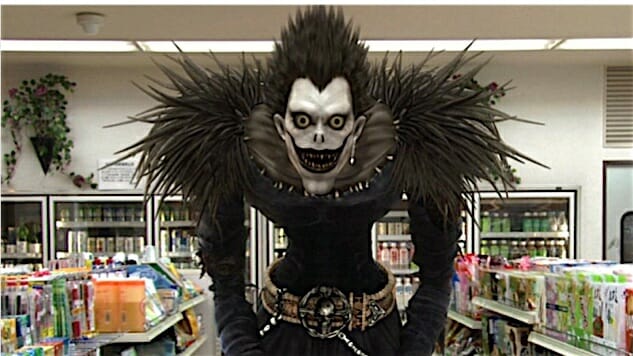
Much has been said already about the new live-action remake of Ghost in the Shell. Allegations of whitewashing and a general disregard for the source material have dogged the film’s production for over the past year, raising concerns in the ongoing debate as to whether American filmmakers are equipped at all to the task of adapting foreign cultural properties with respect to their origins. The thought process and motivations behind such productions seems easy enough to grasp. After all, with superhero and comic movies dominating the zeitgeist of mainstream entertainment and earning some of the highest-grossing turnouts of the past two decades, why shouldn’t the same be true for anime movies?
At least, that’s what some of Hollywood’s biggest studios are thinking, as evidenced by the announcement of not only Ghost in the Shell but several other anime-to-live-action productions just within the past year. With Robert Rodriguez’s Alita: Battle Angel slated for release next summer, Adam Wingard’s Death Note remake premiering via Netflix in August, James Wan’s Robotech gearing up for pre-production, and Warner Bros. and Lionsgate respectively in the process of optioning rights to a remake of Attack on Titan and a live-action Naruto movie, it looks as though a new wave of anime and manga adaptations will become the latest trend in American entertainment. Not to mention Warner Bros.’ long postponed and much maligned attempt at an American Akira remake, whose nebulous production status looms heavy over fans of the 1988 original like some vague, ominous threat. The box-office success or failure of Rupert Sanders’ Ghost in the Shell may prove to be an inadvertent weathervane of sorts, pointing to either the continued support or premature mothballing of this nascent string of live-action productions. Attempts to translate anime to film however are anything but new, with Japan having long since gotten the jump on America by several decades with plenty attempts at adapting the country’s most prolific cultural export to the silver screen.
In preparation for Ghost in the Shell’s release, Paste has curated a list of ten of the best live-action anime and manga movies to date, ranging from some of the genre’s more fledgling efforts to films that managed to shuffle the burdensome schtick traditionally attached to genre fare and ingratiate themselves into the canon of popular modern cinema, period.
10. Guyver II: Dark Hero (1994)
Director: Steve Wang

If David Cronenberg was asked to direct a Super Sentai-style action flick at the height of his “body horror” phase, it might have looked something like The Guyver. Adapted from Yoshiki Takaya’s 1980 manga series, Guyver: Dark Hero is the direct sequel to the much-maligned 1991 adaptation, a movie championed for its impressive visual effects courtesy of co-director Joji “Screaming Mad George” Tani though panned by critics and fans for its stilted acting and cornball mishandling of the manga’s otherwise dark and violent subject matter. Guyver: Dark Hero is an improvement, though not by much, switching out the perpetually awkward Jack Armstrong for the infinitely more approachable (though still kind of cheesy) David Hayter in the role of Sean Barker, a young man whose body hosts a bio-organic alien device capable of transforming him into an superpowered living weapon known simply as “The Guyver.” Guyver: Dark Hero is noticeably darker than its predecessor, doubling down on the depiction of Sean’s deteriorating psyche as he fights subconsciously to fend off the Guyver unit’s invasive bloodlust while fighting crime at night as a vigilante. After destroying the nefarious Cronos organization in the first film, Sean is stirred by mysterious visions to travel to a hidden archaeological site in search of a means to find peace with the Guyver. As expected, things go awry, and it’s up to Sean to contend with a new host of vicious “Zoanoid” creatures as he struggles to accept his role as the Guyver. To be frank, even when compared to the original, Guyver: Dark Hero feels like a comedy of movie-making errors, with hammy dialogue, stiff fight scenes, and an ill-fitting soundtrack of over-aggressive synth scores combined with at one point, I shit you not, auto-tuned cat screeches. That said, the film has something of a cult following among fans of lowbrow superhero movies, and it does manage to possess a sort of earnest charm about it that eludes the glut of other, more poorly handled live-action treatments of anime.
9. Riki-Oh: The Story of Ricky (1991)
Director: Lam Ngai Kai
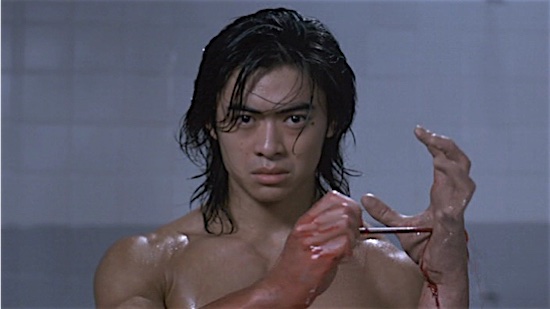
Where does one even begin to describe Riki-Oh: The Story of Ricky? For starters, it’s an adaptation of Masahiko Takajo and Tetsuya Saruwatari’s martial arts manga, set in a post-apocalyptic world circa 2001, where every prison on Earth has been privatized by a cabal of corrupt businessman. Louis Fan is Ricky Ho, a kind-hearted music student with Tommy Wiseau hair sentenced to ten years in a max security facility for murdering the man who orchestrated his girlfriend’s death. Antagonized by malicious inmates and a conniving hook-handed assistant warden, Ricky must use his martial arts mastery and superhuman ability to disembowel human beings with his bare hands to dispatch the notorious Gang of Four and win his freedom. Riki-Oh is a cult classic, combining tone-deaf performances with profoundly weird fight scenes and comically excessive gore. From the cyclopean assistant warden who keeps mints in his false eye to the head warden who resembles a man poorly cosplaying as Judge Doom from Who Framed Roger Rabbit, the movie never fails to top its own absurdity, perpetually keeping the viewer on their toes while waiting until the next indiscriminate act of ultra-violence spills out across the screen. The film’s prosthetic gore effects are equal parts laughable and effective, with just enough scenes that hit the sweet spot of gasp-worthy shock to make up for the majority of low-budget kitsch. Mind you, it’s not what you would call a “good film” by any traditional metric, but a morbidly satisfying one that does enough to assert its own peculiar claim to existence. In short, it’s a great movie to knock back a few beers to and watch with a like-minded group of cornball action aficionados. Riki-Oh might make you cringe, it might make you laugh—hell, it might even make you cry from laughter. But what’s undeniable is its appeal to entertain anyone with a taste for the lowbrow.
8. Gantz (2011)
Director: Shinsuke Sato
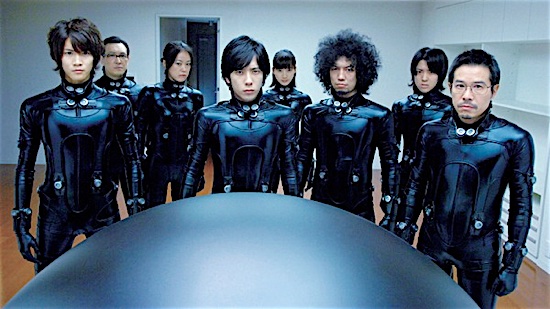
Kei Kurono is a craven and selfish high-schooler with little regard for anyone other than himself. But when he and his estranged childhood friend Masaru are killed in an act of courage during a grisly subway accident, the two are resurrected in a room filled with other recently deceased people by a mysterious black orb that charges them with the task of exterminating alien invaders masquerading on Earth. Shinsuke Sato’s 2011 Gantz and its follow-up Perfect Answer are near beat-for-beat remakes of Hiroya Oku’s sci-fi action horror manga, faithfully realizing the hyper-violent premise with few if any deviations from the source. Sato’s previous work as a videogame designer suits him well here, as much of Gantz’s premise boils down to a threadbare gamification of seinen archetypes and tropes as the protagonists are shuffled from one arbitrary one-off adversary to the next. That’s not to say that the movie is unenjoyable. The creature effects and gore are as good as they’ve ever been in a Japanese adaptation, and the cast’s initial one-dimensional personalities play off of one another well as the film progresses. What’s unfortunate about the movie is that it does nothing to improve upon the original’s shallowness or its unflattering depiction of women. Diligence to source material is more often than not rewarded by fans, but a failure to delve inward and correct on the series’ missteps frames this film as an enjoyable if inessential appendage of the original series.
7. Rurouni Kenshin (2012)
Director: Keishi Otomo

Keishi Otomo’s Rurouni Kenshin trilogy enjoys a rather sterling reputation among critics and fans of Nobuhiro Watsuki’s original manga, and for good reason. Evocative set pieces, bristling fight choreography, and a more-or-less well-casted selection of principal characters combine to make the Rurouni Kenshin films some of the most visually entertaining anime films to date. And yet … something feels, well, “off” about them. Take for example the first movie, released in 2012. Every one of Rurouni Kenshin’s core strengths is offset by a lackluster, sometimes even glaring counterpoint. When the action gets heavy, poor cinematography throttles otherwise engaging swordplay, robbing the choreography of its kineticism and rendering the action choppy and hard to follow. And while the actor portrayals are for the most part enjoyable and defer to the source material, often the overblown theatricality of their introductions and later performances have all inadvertent comedy of a musical that somehow forgot to include music numbers. Condensing a multi-volume chanbara series into a trilogy of film is an understandably daunting task, and much of the aforementioned eccentricity uncharacteristic of the source material could be forgiven had the film only bothered to smooth out its many cutting-room floor inconsistencies. The role and appearances of many of the characters from the original series are significantly truncated or conflated into one another, and as a result the motivations behind their actions become inadvertent casualties in the move to live-action. Why does Udon Jin-e use the Kamiya life-avowing sword technique to impersonate the Battosai, when he has no personal reason to hold a grudge against the Kamiya dojo? Your guess is as good as mine. This and more questionable inconsistencies spring out of the initial installment and peter out through the rest of the trilogy. All that said, Rurouni Kenshin is still a serviceable adaptation with strong portrayals and solid wire-fu action that could have done with a more thoughtful approach to editing and script revision.
6. Golgo 13: Assignment Kowloon (1977)
Director: Yukio Noda

Duke Togo is a man with no name, no nationality, no close ties. Only a talent for killing and a ruthless proficiency to see his assignments through to the end. Adapted from Takao Saito’s landmark crime manga, Golgo 13: Assignment Kowloon follows the exploits of master assassin “Duke Togo,” a.k.a. “Golgo 13,” a supernaturally talented sniper and martial artist who has never failed to dispatch a target. Hired by an American crime syndicate to assassinate Chou Lei Fang, a wealthy businessman and rogue member of the syndicate based out of Hong Kong, Golgo is drawn into a nest of conspiracies when his target is eliminated by a third party and is forced to go on the run in search for answers. Eccentrically paced and scored by comparison to its comparatively dour 1972 predecessor, Assignment Kowloon is an adequate treatment of its source material that hews close to the campy crime-action thrillers typical of its era. Sonny Chiba proves himself an excellent choice for the role of Duke, a taciturn loner whose code of professionalism leaves him loyal only to himself. It’s a busy if at times outlandish film with frantic editing, decently choreographed fight sequences, and a wild soundtrack that veers between playfully tongue-in-cheek and dissonant tonal insanity. The virtue of adapting Golgo 13 into a live-action film is that the series’ strength is not concentrated in any one storyline, but rather in the character of Golgo himself, allowing any would-be director to play with the concept and tone of the property’s universe without compromising the crux of its appeal. Golgo 13: Assignment Kowloon’s aptitude in developing apart from its source is proof of the franchise’s unique and for the most part untapped vitality as fodder for a modern live-action film. Assignment Kowloon is proof, if nothing else, that a new installment in the Golgo 13 series is long overdue.
5. Death Note(2006)
Director: Shusuke Kaneko
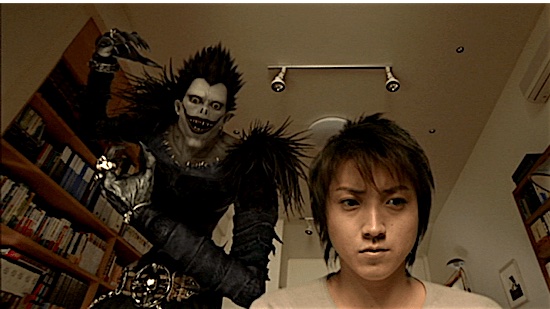
With You’re Next director Adam Wingard’s remake slated for release this August, there’s no better time than now to return to Shusuke Kaneko’s 2006 original. Adapted from the occult detective manga series by Tsugumi Ohba and Takeshi Obata, Death Note follows the story of Light Yagami, a bright aspiring law student who happens upon the titular Death Note, an otherworldly tome capable of ending the life of whoever’s name is written within its pages. Arrogant and disillusioned by the seeming ineptitude of the justice system and due process, Light is corrupted by this dark and intoxicating new power, transforming himself into the elusive vigilante known only as “Kira” and meting out “justice” with frivolous discretion. All of this while under the watchful eye of Ryuk, a psychopompic demon and original owner of the Death Note, who laughs from the sidelines as Light’s youthful idealism erodes into pathological bloodlust and megalomania. Essentially a modern crime-thriller twist on the legend of Faust, Death Note is a strong companion to the original manga that arguably outshines even the massively popular 2006 animated series with its concise plotting and engrossing action. Tatsuya Fujiwara delivers on Light’s pompous yet thoughtful demeanor, while Kenichi Matsuyama’s turn as the consulting detective “L” comes across as stiff (though ultimately in line with the character’s personality). Of the elements that the film introduces to the story, the introduction of Shiori Akino as Light’s girlfriend and the subtle emphasis on the information culture’s role in amplifying Kira’s mystique are strong and welcomed additions to the franchise. As far as live-action adaptations go, Death Note is a near pitch-perfect example of a film that shows due deference to its source without suffering for it.
4. Speed Racer (2008)
Director: The Wachowskis
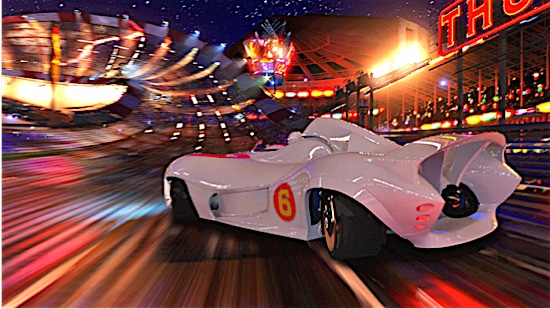
Peeling around the bend at number four, it’s Speed Racer in the Mach Five! The 2008 live-action adaptation of the beloved 1960s manga and television series has a somewhat dubious reputation among cinephiles and fans of the original. Critically panned and financially dead on arrival upon its initial release, the Wachowski’s cinematic love letter to one of the animated inspirations of their youth has gone on to amass a vocal contingent of critics and audiences who praise it nonetheless. The reason? Between the film’s outlandish color palette and garish computer-animated backgrounds, Speed Racer manages to fit a sincere and touching story of family love and perseverance in the face of unassailable adversity. It’s typical for most adaptations of animated properties to sacrifice fidelity to their source material in lieu of constructing a more plausible sense of “reality” within a live-action format, pulpifying the original’s eccentricities (see Wolverine’s yellow tiger-striped leotard) into comparatively straitlaced visuals more digestible for mainstream audiences. Speed Racer cheekily drifts circles around this notion before gunning it in the opposite direction, leaning wholeheartedly into its premise as a “live-action animated film” and going all-in on its maximalist psychotropic aesthetic. The use of full-focus cameras during production to compress the dimensions of the film’s images so that nearly everything within frame is in perfect focus lends a surreal uncanniness to the audacious weirdness of what’s already on-screen, much to the joy of fans and vocal chagrin of its detractors. Speed Racer has problems, namely the inclusion of that chimpanzee and the allegations of animal cruelty because of it, but perhaps the most damning was the film’s unerring trust in its audience to grasp the sincerity of its intentions and suffering because of that. It’s a dark horse contender for sure, but with time comes perspective, and the several years since Speed Racer’s release have only served to highlight the necessity of its reappraisal.
3. Oldboy (2003)
Director: Park Chan-wook
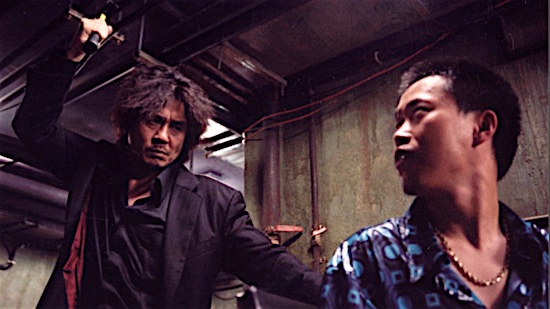
There are other adaptations of manga and anime, and then there’s Oldboy. Park Chan-wook’s 2003 film garnered him worldwide renown as a director, earning him the coveted Grand Prix award at the 2004 Cannes Film Festival, praises from the likes of Quentin Tarantino, and vaulting his career onto the international stage. Adapted from Garon Tsuchiya and Nobuaki Minegishi’s 1996 crime manga, Oldboy follows the story of Oh Dae-su, an ordinary salaryman who, after a drunken row in the midst of celebrating his daughter’s upcoming birthday, is kidnapped and sequestered within a one-room prison for fifteen years. Driven to the brink of insanity, Oh Dae-su is mysteriously released from his captivity and sets on a path to kill the person who stole his life. But the answers that Dae-su seeks may inadvertently send him plummeting to new depths of despair and depravity. Everything about Oldboy speaks to the talent and craftsmanship of those involved in its production, from Jo Yeong-wook’s ringing score to Chung Chung-hoon’s spectacular cinematography and Kim Sang-bum’s editing. And of course, one would be remiss to leave out the film’s infamous hallway fight scene, which over the course of a four-minute single take consummates Oh Dae-su’s radical transformation from a pudgy layabout into a hardened brawler of unstoppable grit. If you’ve somehow managed to not watch Oldboy yet, do so immediately. And when you’re finished, it’s time to watch it again.
2. Lady Snowblood (1973)
Director: Toshiya Fujita

Most parents endeavor to leave behind a legacy for their children, or at the very least an assurance for their continued happiness. For Yuki Kashima, her inheritance was her mother’s all-consuming desire for revenge, a vendetta satiated only through the blood of her late family’s tormentors. Toshiya Fujita’s Lady Snowblood is a sensuous and scintillating marvel of revenge cinema, a exquisite film whose eminent style, writing, action, and structure would go on to inform the aesthetic and tone of Quentin Tarantino’s Kill Bill. Adapted from Kazuo Koike and Kazuo Kamimura’s manga, Lady Snowblood follows the orphan Yuki as she is raised from childhood to become an “Asura,” a living incarnation of vengeance who exists for the sole purpose of avenging her family’s death at the hands of a loathsome cadre of conspirators. Meiko Kaji is masterful in her portrayal of Yuki, whose single-minded conviction to avenge a family she never knew belies a wealth of angst and fatalism brewing beneath the softness of her demeanor. The action in Lady Snowblood is exhilarating, with swift-footed camera work, smart blocking, and gratuitous geysers of blood transforming scenes of chaos into Pollockian artistry. The film is an inspired take on the manga, integrating panels and pages from the original into the movie itself to become a meditation on the question of where truth ends and legend begins. A confident stand-alone film, its sequel Lady Snowblood: Love Song of Vengeance is also highly recommended, setting Yuki on yet another perilous assassination quest while still reeling from the listless doubt that persists through a now purposeless existence.
1. Lone Wolf and Cub: Baby Cart at the River Styx (1972)
Director: Kenji Misumi
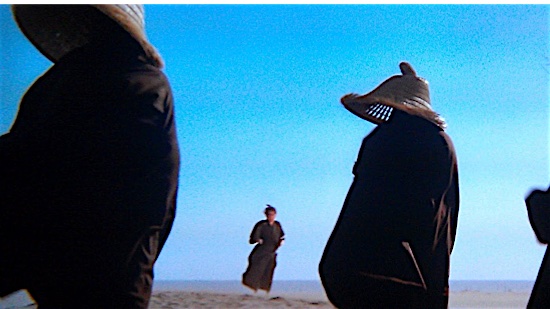
The Lone Wolf and Cub series is one of the most celebrated action series of all-time, qualifying as required viewing for any serious cinephile or avowed chanbara enthusiast. Adapted from Kazuo Koike and Goseki Kojima’s influential manga series, the films follow the stories of Itto Ogami, former high executioner of the Tokugawa shogunate turned ronin assassin, and his infant son Daigoro. Ousted by a rival faction and framed for a crime he did not commit, Itto renounces his honor and commits to the life of an itinerant sellsword, cutting a swath of vengeance and retribution across the Japanese countryside while hounded by the machinations of the treacherous Ura-Yagyu clan. Recommending only one of the Lone Wolf and Cub films feels like a fool’s errand, but if pressed, you couldn’t do for a better introduction to the series than a double-feature of Lone Wolf and Cub: Sword of Vengeance followed by Lone Wolf and Cub: Baby Cart at the River Styx. Perhaps best known in the States as Shogun Assassin, which spliced parts of both into a single feature that would go on to inspire the likes of hip-hop group the Wu-tang Clan, the two films showcase both spectrum ends of the series’ core appeal. Sword of Vengeance is a consummate origin story, with beautiful cinematography, novel sound design, and tense swordplay, while Baby Cart at the River Styx resonates on a moment to moment level, with dazzling fight sequences that only continue to escalate in their elaborate composition, right up to and including the film’s tense and breathless conclusion. Like Fujita’s adaptation of Lady Snowblood, the Lone Wolf and Cub series is a rare confluence of collaborative creativity begetting cinematic brilliance. What better choice than author Kazuo Koike himself to write the screenplay, or The Tale of Zatoichi’s Kenji Misumi to direct? And what about Tomisaburo Wakayama, whose stern and scowling demeanor perfectly conveys the quiet rage and eminent skill of Itto Ogami? Naturally, plans for a new installment in the series are currently in the works, with Fast and the Furious director Justin Lin attached no less. Who knows what such a film might be, or whether it will even be produced. Regardless, on the totem pole of live-action anime and manga remakes, the Lone Wolf and Cub series reigns with uncontested supremacy as not only one of the greatest adaptations of its time, but one of the most greatest action series of all-time.
Toussaint Egan is a culturally omnivorous writer who has written for several publications such as Kill Screen, Playboy, Mental Floss, and Paste. Give him a shout on Twitter.